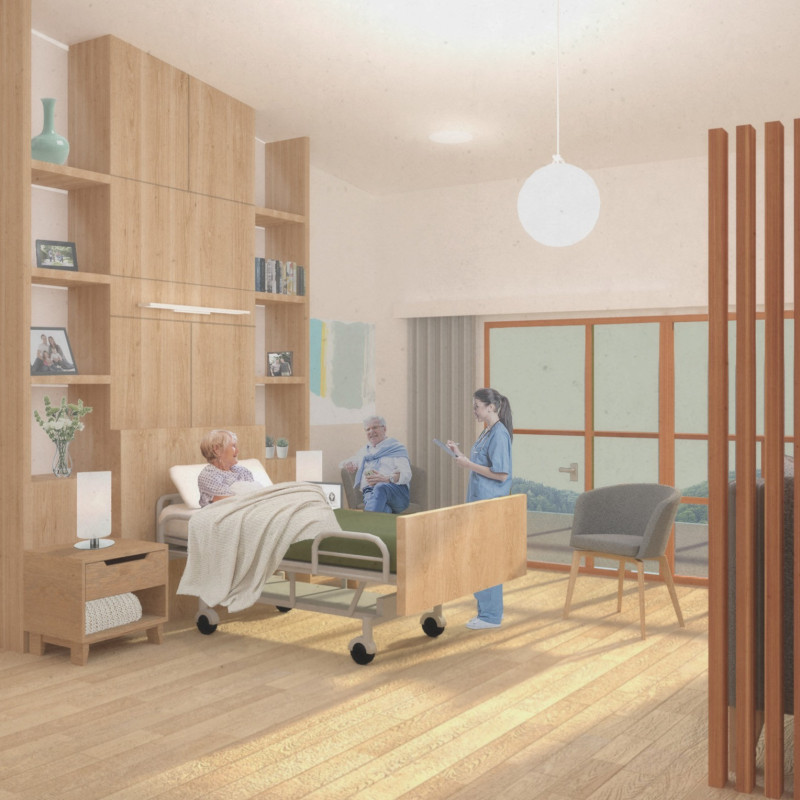5 key facts about this project
The design of the Centre integrates healthcare needs with environmental considerations, creating a setting that fosters recovery while acknowledging the socio-historical context of the region. Its layout is carefully organized to facilitate accessibility and interaction, with distinct areas dedicated to patient care, community engagement, and educational outreach.
Healing-Centric Design Approach
The unique approach of this project lies in its focus on healing rather than mere treatment. Natural materials, predominantly wood, glass, and concrete, are used throughout the structure to create a warm, inviting environment. Extensive glazing allows natural light to permeate the interiors, enhancing the connection between the indoor spaces and the surrounding landscape. This connection is further emphasized through landscaped gardens and therapeutic pathways, which encourage movement and reflection.
The facility features hospice rooms designed for comfort and privacy, each equipped with large windows offering views of the natural surroundings. Common areas have been incorporated to promote social interaction among patients, families, and healthcare providers. Moreover, these areas are visually and physically connected to exterior gardens, reinforcing a sense of tranquility within the site.
Interior and Community Integration
The Centre includes specialized spaces such as a community library and exhibition areas that focus on educating the public about asbestos and its impact on health. These spaces are designed to facilitate community events and workshops, ensuring that the facility remains accessible to the wider public. The architectural design incorporates flexible layouts that can adapt to varying programmatic needs.
By prioritizing engagement with the community and the environment, the Centre for Human & Environmental Health stands out from typical healthcare facilities. Its design embraces sustainable practices, promoting local materials and ecologically responsible construction methods. This commitment not only enhances the building's aesthetic but also contributes to its durability and relevance as a community asset.
To gain a deeper understanding of the architectural plans, sections, designs, and innovative ideas employed in this project, readers are encouraged to explore the detailed presentation of the Centre for Human & Environmental Health for a comprehensive analysis. This exploration will offer further insights into the thoughtful design approaches that define this distinctive architectural endeavor.























